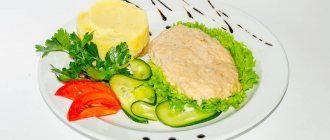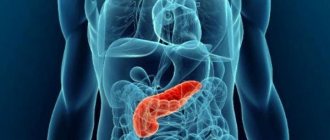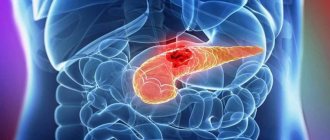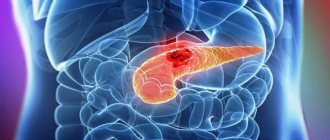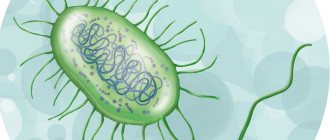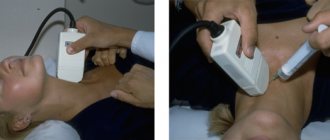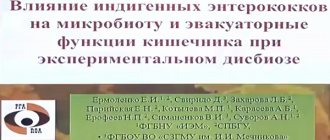When the function of one of the organs of the digestive tract decreases, other organs are inevitably involved in the pathological process. Thus, with inflammation of the pancreas, inflammation of the gallbladder, biliary tract, liver often develops as a complication, the work of the sphincters of the stomach and duodenum is disrupted (gastroesophageal reflux disease (GERD), reactive hepatitis, cholestasis, cholangitis, cholecystitis are often diagnosed with pancreatitis).
To reduce the severity of the inflammatory process occurring in the hepatobiliary system and stop its spread, a therapeutic diet is prescribed, which includes healthy foods for the liver and pancreas.
Also, when the motor and secretory function of the glands of the digestive tract decreases, you need to know what the liver and pancreas do not like, so as not to cause a relapse of the disease. Nutrition takes a leading place in therapy, and drug treatment is prescribed as an auxiliary treatment.
General rules
Changing your diet, eating fast food that contains large quantities of fats and light carbohydrates, increasing stress load - all this serves as a background for the appearance of diseases of the gastrointestinal tract.
These diseases, to varying degrees, worsen the quality of life of patients, and it is comparable to that for diseases of the cardiovascular system. In recent years, the prevalence of these diseases has been increasing and all age groups are affected by the pathology - children and adolescents, people of working age and the elderly. During treatment, much attention is paid to dietary nutrition, the role of which is especially significant in this pathology. Table No. 5 is a universal basic diet used for diseases of the gastrointestinal tract. Varieties have been created on its basis, which makes it possible, with some correction, to use it for diseases of the liver, pancreas, gallbladder and ducts, when they are combined with colitis and gastritis , as well as after liver surgery.
The diet for diseases of the liver and pancreas should be gentle, therefore chemical and mechanical irritants are excluded or sharply limited (depending on the stage of the process). Disease of the liver and pancreas requires a diet; food intake should be small and small, and the food itself should be warm. Eating cold or hot foods is not allowed.
The general principles of nutrition for the pathology of these organs are:
- Exclusion from the diet of strong chemical irritants: essential oils of plants (onion, garlic, celery, radish, radish) and extractive substances (broths), dried and smoked foods, fried foods. To extract extractive substances, which is especially important for pancreatitis , the meat is boiled in small pieces, draining the water, and only then used as a semi-finished product for various dishes.
- Elimination of mechanical irritants in the form of coarse meats, fresh vegetables with coarse fiber and unprocessed foods.
- Eliminate the frying method when cooking. Dishes are prepared boiled or steamed. Baking without a crust is possible only with liver diseases in remission.
- A reduced amount of fats (refractory and poorly digestible ones are limited), vegetable oils are introduced, but in limited quantities for pancreatitis and calculous cholecystitis.
- Limiting foods rich in purines: animal liver, meat of young animals and birds, yeast, sardines, tuna, sprats, herring, salmon caviar, salmon, shrimp, mussels, squid, dried porcini mushrooms, smoked eel.
- Limiting table salt (up to 6 g) and egg yolks.
- Introduction of lipotropic substances that protect the liver from fatty degeneration. They are found in beef, lean fish, low-fat cottage cheese, seafood, whey, buttermilk, buckwheat and soy flour.
- Small meals with frequent meals. This promotes the regular flow of bile and pancreatic enzymes.
- Dishes are wiped or chopped during an exacerbation and in cases of severe inflammation.
During an exacerbation, nutrition should create maximum peace and help eliminate pain, so food is given pureed and liquid. The principle of small and frequent meals must also be observed, this is especially important for pancreatitis, when meals reach up to 8 times a day in small portions (50-100 g each).
For this disease, a low-calorie diet containing 60 g of protein and 50 g of fat is first prescribed. The diet consists of boiled foods of a semi-liquid consistency and mainly carbohydrate foods (decoctions of cereals, weak tea with sugar, pureed liquid porridges, pureed compotes, crackers, jelly and jelly with xylitol).
Protein products are gradually introduced: curd puddings, calcined cottage cheese in the form of paste, steamed omelet from 1-2 eggs, cream soup from boiled meat, meat and fish soufflé, steamed cutlets from lean meat. If well tolerated, add butter, pureed vegetable soups and vegetable puree (potato, carrot, beetroot). All dishes are prepared boiled or steamed. At first they are thoroughly wiped, and then crushed.
Nutrition during the acute period of liver disease is organized within Table No. 5A , and it is more varied than during exacerbation of pancreatitis:
- Steamed dishes made from twisted meat and lean fish.
- Puree or chopped boiled vegetables (potatoes, pumpkin, carrots, cauliflower and beets).
- Reduced amount of refractory fats and salt.
- Soups made with vegetable broths with pureed cereals and vegetables, puree soups seasoned with butter or cream.
- Porridges: semolina, buckwheat, rice, oatmeal, boiled in water and ground to a semi-liquid consistency. Vegetable oil is added to dishes if it is well tolerated.
- Bold cottage cheese, low-fat fermented milk products.
- Protein omelettes.
- Ripe, sweet fruits, baked and boiled, raw - only pureed.
During the recovery period, nutrition during the treatment of a diseased liver and pancreas is balanced and contains 90 g of proteins, 400 g of carbohydrates and fats - 80 g. However, the pathology of the pancreas requires adjustments and the nutrition of such patients is organized within Table No. 5P .
, exocrine gland insufficiency develops over time , which manifests itself in insufficient production of digestive enzymes. They are involved in the breakdown and digestion of carbohydrates, fats and proteins. Indigestion is manifested by signs of malnutrition in patients: weight loss and weight deficiency. Patients also develop undigested fat in their stool (steatorrhea).
In this regard, a complete diet is recommended, so the amount of protein is increased to 120-150 g (of which animal proteins should be 80-85%), and the fat content is reduced to 70 g and below (depending on their tolerance). Refractory fats are poorly tolerated by patients - they increase abdominal pain, cause diarrhea and support inflammation, so their amount is significantly reduced, and the diet is enriched with vegetable oils.
Simple carbohydrates are also limited. This is due to the fact that Langerhans cells , which produce insulin . Ultimately, this can lead to insulin deficiency and the development of diabetes . Limiting or eliminating easily digestible carbohydrates (confectionery, white bread, semolina, sugar and sweets, potatoes, rice and oatmeal) serves as a prevention of diabetes. Sometimes patients are recommended to use various sweeteners (saccharin or xylitol) when preparing jellies, compotes, mousses, jelly and even jam.
At the same time, correction of enzyme imbalance is carried out with the prescription of enzyme preparations. Diet and enzyme replacement therapy prevent the progression of fibrodegenerative changes in the gland, they reduce pain and correct digestive disorders.
Taking enzyme preparations and maintaining proper nutrition should continue for years. Reducing dyspeptic syndrome and stabilizing weight are not indications for discontinuing enzyme therapy, since most patients, even with normal weight, have a nutritional disorder, as well as micronutrient deficiency.
The diet uses foods that inhibit pancreatic enzymes: egg whites, potatoes, soybeans, oatmeal. The amount of fat is increased gradually from 50 g to 70 g, observing their tolerance. You should not consume foods with a juice effect: any broths, fried foods and alcoholic beverages.
The list of products expands during the period of remission, when the inclusion of raw vegetables and fruits is allowed. Soups can be consumed raw, and new first courses can be carefully introduced into the diet: beetroot soup, borscht and cabbage soup. The following remain contraindicated: coffee, cocoa and carbonated drinks.
Fasting days are indicated for many diseases, including pancreatitis .
This kind of mono-diet allows the gastrointestinal tract to work in a gentle manner. Since fasting diets are deficient in chemical composition, they can be prescribed only for 1 day and once a week or less often for patients with pancreatitis with low nutrition. The most acceptable fasting days for these diseases are: oatmeal, cottage cheese, curd and fruit, rice and compote, watermelon, juice, pumpkin.
What diet is prescribed for diseases of the pancreas and liver
In order to restore the impaired functions of the bile ducts and liver, therapeutic diet No. 5 is prescribed. Depending on the pathology of the hepatobiliary system and its stage, modifications of the dietary table are prescribed, which differ in the chemical composition of the diet and energy value.
Small changes to the basic diet No. 5 can speed up or slow down bile secretion. All diet options involve mechanical sparing of the digestive tract, which means that products with coarse fiber are excluded from the menu. Some diet options require chemical sparing, so a number of foods that can enhance the production of hydrochloric acid and enzymes are excluded.
If you have a disease of the liver and pancreas, you need to eat often, but in small portions, so that the receptors responsible for the production and secretion of bile are irritated. Basic diet No. 5 will be prescribed for chronic inflammation of the liver and gallbladder, cholelithiasis, and also after relapse of hepatitis.
The diet not only removes the functional load from the gland and helps improve bile secretion, but also provides mechanical sparing of the digestive tract, which is often involved in the pathological process. The calorie content of the daily diet should be no more than 3100 kcal.
The patient’s body should receive 100 g of proteins, 100 g of fats and 450 g of carbohydrates, the amount of table salt should not exceed 10 g. When drawing up the menu, daily doses of necessary microelements and vitamins (carotene 10.5 mg, thiamine 2 mg, riboflavin) should be taken into account 4 mg, vitamin PP 20 mg, ascorbic acid 200 mg, calcium 0.8 g, magnesium 0.5 g, phosphorus 1.6 g, iron 15 mg).
According to Diet No. 5, everything should be steamed, boiled or baked
In case of acute hepatitis, cholecystitis, cholangitis, angiocholitis, as well as during their relapse, diet No. 5A is prescribed. It minimizes the load on the hepatobiliary system so that the functional state of the glands, gallbladder and ducts, intestines and stomach is normalized. It implies not only mechanical sparing of the gastrointestinal tract, but also chemical.
Diet No. 5A reduces the recommended intake of fats to 70–80 grams and carbohydrates to 350–400 grams, the protein content in the daily diet remains within 80–100 grams. The calorie content of the diet should be 2300–2500 kcal. Despite the reduction in the amount of food consumed, the content of vitamins and minerals remains the same as in diet No. 5.
After removal of the gallbladder, an even stricter diet No. 5 is prescribed. It should ensure complete liver sparing and reduce bile production. Vegetable fats are completely excluded from the patient’s diet, and the consumption of simple carbohydrates is also limited to 30–50 grams per day.
The energy value of foods eaten per day should not exceed 2000–2400 kcal.
The chemical composition of food is approximately the following: proteins 90–100 g, fats 50–60 g, carbohydrates 300–350 g. In the postoperative period, the daily intake of minerals and vitamins decreases, with the only exceptions being iron and ascorbic acid. Thus, the patient should receive daily retinol 0.3 mg, carotene 6.7 mg, thiamine 1 mg, riboflavin 1.5 mg, nicotinic acid 13 mg, vitamin C 200 mg, sodium 3.7 g, calcium 0.3 g, potassium 2.8 g, phosphorus 1.2 g, iron 50 mg.
If, after cholecystectomy, bile stagnation syndrome with reduced motility of the biliary tract has developed, then diet No. 5G is indicated. It promotes bile secretion and has a lipotropic effect (burns fat), since it introduces complete proteins and polyunsaturated acids into the diet.
The chemical composition of food in diet No. 5G is the same as in diet No. 5, only the amount of fat is increased by 20–30 grams, half of which should be of plant origin. The calorie content of foods should not exceed 3400 kcal per day.
When the inflammatory process in the pancreas worsens, diet No. 5P is prescribed, which has two options. First, it is recommended to eat a diet that helps relieve pain and reduce the load on the pancreas, as well as reducing reflex excitation of the gallbladder. This diet involves chemical and mechanical sparing of the tract and for the first day calls for abstaining from food altogether.
Authorized Products
Diet for liver and pancreas disease includes:
- Soups in vegetable broths with vegetables (in case of exacerbation - ground). Cereal soups are well boiled or kneaded, seasoned with sour cream, butter or cream. The most acceptable for these diseases are puree soups.
- Boiled and grated (in case of exacerbation) potatoes, pumpkin, zucchini, carrots, cauliflower, beets, green peas. After a while, the consumption of finely chopped boiled vegetables is allowed, and during the period of remission - raw (grated carrots, cucumbers and pumpkin, peeled tomatoes).
- Porridge with water: semolina, oatmeal, buckwheat, rice. Pearl barley, corn, millet and barley are limited. Porridges are well boiled or ground, and also prepared from flour (buckwheat, oatmeal, rice) with the addition of milk. You can make a soufflé from cereals, pouring jelly or jam.
- Lean chicken, beef, veal or rabbit. Boiled chicken and rabbit are consumed in pieces; other types of meat are prepared in the form of chopped, steamed products.
- Low-fat fish (pike perch, hake, cod, pollock, perch, carp, pike, whiting), steamed - in pieces or in the form of cutlets. For pancreatitis, stewed and poached fish is not allowed, as it contains a large amount of extractive substances.
- Low-fat fermented milk products. Sour cream and milk are allowed as additives in dishes, since whole milk is poorly tolerated. You can include mild grated cheese, low-fat cottage cheese and dishes made from it in your diet. In case of calcium deficiency, which is observed in patients with pancreatitis, it is better to consume calcined cottage cheese.
- Wheat bread, dried or crackers. It is possible to eat unsweetened cookies.
- White omelettes from 1-2 eggs daily.
- Vegetable-based sauces that diversify your diet. They are prepared on the basis of unfried flour with the addition of sour cream or milk.
- Baked sweet apples and pears and pureed dried fruits. Jams, jelly, mousses and natural marshmallows prepared with xylitol. Mashed raw fruits are allowed to a limited extent.
- For liver diseases, the list of fruits is wider - all ripe fruits (except sour varieties) are allowed, baked and raw.
Table of permitted products
| Proteins, g | Fats, g | Carbohydrates, g | Calories, kcal | |
Vegetables and greens | ||||
| eggplant | 1,2 | 0,1 | 4,5 | 24 |
| zucchini | 0,6 | 0,3 | 4,6 | 24 |
| cabbage | 1,8 | 0,1 | 4,7 | 27 |
| broccoli | 3,0 | 0,4 | 5,2 | 28 |
| carrot | 1,3 | 0,1 | 6,9 | 32 |
| cucumbers | 0,8 | 0,1 | 2,8 | 15 |
| parsley | 3,7 | 0,4 | 7,6 | 47 |
| tomatoes | 0,6 | 0,2 | 4,2 | 20 |
| pumpkin | 1,3 | 0,3 | 7,7 | 28 |
| dill | 2,5 | 0,5 | 6,3 | 38 |
Fruits | ||||
| bananas | 1,5 | 0,2 | 21,8 | 95 |
| pears | 0,4 | 0,3 | 10,9 | 42 |
| apples | 0,4 | 0,4 | 9,8 | 47 |
Nuts and dried fruits | ||||
| raisin | 2,9 | 0,6 | 66,0 | 264 |
| dried figs | 3,1 | 0,8 | 57,9 | 257 |
| dried apricots | 5,2 | 0,3 | 51,0 | 215 |
| dried apricots | 5,0 | 0,4 | 50,6 | 213 |
| prunes | 2,3 | 0,7 | 57,5 | 231 |
Cereals and porridges | ||||
| buckwheat (kernel) | 12,6 | 3,3 | 62,1 | 313 |
| oat groats | 12,3 | 6,1 | 59,5 | 342 |
| rice | 6,7 | 0,7 | 78,9 | 344 |
Flour and pasta | ||||
| pasta | 10,4 | 1,1 | 69,7 | 337 |
| noodles | 12,0 | 3,7 | 60,1 | 322 |
| buckwheat noodles | 14,7 | 0,9 | 70,5 | 348 |
Bakery products | ||||
| bran bread | 7,5 | 1,3 | 45,2 | 227 |
| whole grain bread | 10,1 | 2,3 | 57,1 | 295 |
Confectionery | ||||
| jam | 0,3 | 0,2 | 63,0 | 263 |
| jelly | 2,7 | 0,0 | 17,9 | 79 |
| marshmallows | 0,8 | 0,0 | 78,5 | 304 |
| fruit and berry marmalade | 0,4 | 0,0 | 76,6 | 293 |
| paste | 0,5 | 0,0 | 80,8 | 310 |
| Maria cookies | 8,7 | 8,8 | 70,9 | 400 |
Raw materials and seasonings | ||||
| honey | 0,8 | 0,0 | 81,5 | 329 |
| sugar | 0,0 | 0,0 | 99,7 | 398 |
Dairy | ||||
| kefir 1.5% | 3,3 | 1,5 | 3,6 | 41 |
| Ryazhenka | 2,8 | 4,0 | 4,2 | 67 |
Cheeses and cottage cheese | ||||
| cottage cheese 1% | 16,3 | 1,0 | 1,3 | 79 |
Meat products | ||||
| beef | 18,9 | 19,4 | 0,0 | 187 |
| rabbit | 21,0 | 8,0 | 0,0 | 156 |
Bird | ||||
| boiled chicken breast | 29,8 | 1,8 | 0,5 | 137 |
| boiled chicken drumstick | 27,0 | 5,6 | 0,0 | 158 |
| boiled turkey fillet | 25,0 | 1,0 | — | 130 |
Eggs | ||||
| soft-boiled chicken eggs | 12,8 | 11,6 | 0,8 | 159 |
Fish and seafood | ||||
| flounder | 16,5 | 1,8 | 0,0 | 83 |
| pollock | 15,9 | 0,9 | 0,0 | 72 |
| cod | 17,7 | 0,7 | — | 78 |
| hake | 16,6 | 2,2 | 0,0 | 86 |
Oils and fats | ||||
| butter | 0,5 | 82,5 | 0,8 | 748 |
| olive oil | 0,0 | 99,8 | 0,0 | 898 |
| sunflower oil | 0,0 | 99,9 | 0,0 | 899 |
Non-alcoholic drinks | ||||
| water | 0,0 | 0,0 | 0,0 | — |
| mineral water | 0,0 | 0,0 | 0,0 | — |
| green tea | 0,0 | 0,0 | 0,0 | — |
Juices and compotes | ||||
| apricot juice | 0,9 | 0,1 | 9,0 | 38 |
| carrot juice | 1,1 | 0,1 | 6,4 | 28 |
| peach juice | 0,9 | 0,1 | 9,5 | 40 |
| plum juice | 0,8 | 0,0 | 9,6 | 39 |
| tomato juice | 1,1 | 0,2 | 3,8 | 21 |
| pumpkin juice | 0,0 | 0,0 | 9,0 | 38 |
| rose hip juice | 0,1 | 0,0 | 17,6 | 70 |
| * data is per 100 g of product | ||||
Fully or partially limited products
The following are excluded from the diet of patients:
- Broth-based soups, borscht, okroshka, beetroot soup, cabbage soup. The latter dishes can be carefully introduced into the diet for liver diseases.
- Coarse vegetables (white cabbage, rutabaga, radishes, turnips, eggplants, radishes), mushrooms in any form, legumes, pickled products.
- Fatty fish and meat, cooking fats, lard, goose and duck meat, stewed meat and fish, any fried foods, smoked meats, salted fish, fish roe, all sausages, canned food.
- Offal.
- Rye bread and any fresh bread, yeast baked goods, fried cheesecakes and pancakes, confectionery, puff pastry, pancakes.
- Cereals: pearl barley, corn, millet and barley are not indicated for pancreatitis. For other diseases they can be used if well tolerated.
- Raw vegetables and fruits during an exacerbation period are then introduced into the diet with caution.
- Vegetables with coarse fiber are excluded (bell peppers, radishes, horseradish, overripe peas, radishes, onions, garlic).
- Black strong coffee, grape juice, chocolate, ice cream, cocoa, jam, carbonated drinks.
- High-fat cottage cheese with high acidity, fried eggs, cream, full-fat milk, sharp cheese.
- Acidic fruits and berries (apples, cherries, cranberries) and fruits containing a lot of carbohydrates (grapes, dates, bananas), as they cause bloating and adversely affect carbohydrate metabolism.
- Seasonings and spices, horseradish, ketchup, mustard, herbs, pepper, mayonnaise.
- Alcohol.
Table of prohibited products
| Proteins, g | Fats, g | Carbohydrates, g | Calories, kcal | |
Vegetables and greens | ||||
| canned vegetables | 1,5 | 0,2 | 5,5 | 30 |
| swede | 1,2 | 0,1 | 7,7 | 37 |
| peas | 6,0 | 0,0 | 9,0 | 60 |
| bulb onions | 1,4 | 0,0 | 10,4 | 41 |
| chickpeas | 19,0 | 6,0 | 61,0 | 364 |
| salad pepper | 1,3 | 0,0 | 5,3 | 27 |
| radish | 1,2 | 0,1 | 3,4 | 19 |
| white radish | 1,4 | 0,0 | 4,1 | 21 |
| beans | 7,8 | 0,5 | 21,5 | 123 |
| horseradish | 3,2 | 0,4 | 10,5 | 56 |
| spinach | 2,9 | 0,3 | 2,0 | 22 |
| sorrel | 1,5 | 0,3 | 2,9 | 19 |
Berries | ||||
| grape | 0,6 | 0,2 | 16,8 | 65 |
Mushrooms | ||||
| mushrooms | 3,5 | 2,0 | 2,5 | 30 |
| marinated mushrooms | 2,2 | 0,4 | 0,0 | 20 |
Nuts and dried fruits | ||||
| nuts | 15,0 | 40,0 | 20,0 | 500 |
| almond | 18,6 | 57,7 | 16,2 | 645 |
Snacks | ||||
| potato chips | 5,5 | 30,0 | 53,0 | 520 |
Cereals and porridges | ||||
| corn grits | 8,3 | 1,2 | 75,0 | 337 |
| pearl barley | 9,3 | 1,1 | 73,7 | 320 |
| barley grits | 10,4 | 1,3 | 66,3 | 324 |
Flour and pasta | ||||
| vareniki | 7,6 | 2,3 | 18,7 | 155 |
| dumplings | 11,9 | 12,4 | 29,0 | 275 |
Bakery products | ||||
| buns | 7,9 | 9,4 | 55,5 | 339 |
| Rye bread | 6,6 | 1,2 | 34,2 | 165 |
Confectionery | ||||
| pastry cream | 0,2 | 26,0 | 16,5 | 300 |
| shortbread dough | 6,5 | 21,6 | 49,9 | 403 |
Ice cream | ||||
| ice cream | 3,7 | 6,9 | 22,1 | 189 |
Chocolate | ||||
| chocolate | 5,4 | 35,3 | 56,5 | 544 |
Raw materials and seasonings | ||||
| mustard | 5,7 | 6,4 | 22,0 | 162 |
| mayonnaise | 2,4 | 67,0 | 3,9 | 627 |
Dairy | ||||
| milk 4.5% | 3,1 | 4,5 | 4,7 | 72 |
| cream 35% (fat) | 2,5 | 35,0 | 3,0 | 337 |
| whipped cream | 3,2 | 22,2 | 12,5 | 257 |
Meat products | ||||
| fatty pork | 11,4 | 49,3 | 0,0 | 489 |
| salo | 2,4 | 89,0 | 0,0 | 797 |
| bacon | 23,0 | 45,0 | 0,0 | 500 |
Sausages | ||||
| smoked sausage | 9,9 | 63,2 | 0,3 | 608 |
Bird | ||||
| smoked chicken | 27,5 | 8,2 | 0,0 | 184 |
| duck | 16,5 | 61,2 | 0,0 | 346 |
| smoked duck | 19,0 | 28,4 | 0,0 | 337 |
| goose | 16,1 | 33,3 | 0,0 | 364 |
Fish and seafood | ||||
| smoked fish | 26,8 | 9,9 | 0,0 | 196 |
| black caviar | 28,0 | 9,7 | 0,0 | 203 |
| salmon caviar granular | 32,0 | 15,0 | 0,0 | 263 |
| salmon | 19,8 | 6,3 | 0,0 | 142 |
| canned fish | 17,5 | 2,0 | 0,0 | 88 |
| salmon | 21,6 | 6,0 | — | 140 |
| trout | 19,2 | 2,1 | — | 97 |
Oils and fats | ||||
| animal fat | 0,0 | 99,7 | 0,0 | 897 |
| cooking fat | 0,0 | 99,7 | 0,0 | 897 |
Alcoholic drinks | ||||
| dry red wine | 0,2 | 0,0 | 0,3 | 68 |
| vodka | 0,0 | 0,0 | 0,1 | 235 |
| beer | 0,3 | 0,0 | 4,6 | 42 |
Non-alcoholic drinks | ||||
| soda water | 0,0 | 0,0 | 0,0 | — |
| cola | 0,0 | 0,0 | 10,4 | 42 |
| instant coffee dry | 15,0 | 3,5 | 0,0 | 94 |
| sprite | 0,1 | 0,0 | 7,0 | 29 |
| * data is per 100 g of product | ||||
Useful vitamins and microelements
In addition to following a diet, restoring the pancreas is necessary by monitoring the balance of vitamins and microelements in the body. Most of them are found in products that promote organ health.
You should not purchase vitamin complexes without consulting your doctor. Uncontrolled intake of microelements can cause deterioration, especially if there are other diseases or a specific substance in the body in excess. It is necessary to take pharmaceutical vitamins only after consulting a doctor and undergoing tests.
The diet should contain:
- proteins;
- carbohydrates;
- vitamins of group B (B1, B6, B12), A, E;
- magnesium;
- cellulose;
- antioxidants.
Fiber, vitamins, and carbohydrates are found in sufficient quantities in cereals, fruits, and vegetables. Protein can be obtained from fish and eggs, but the yolk is harmful to the pancreas, so it is excluded. Vitamin B is found in kefir, fermented baked milk, cottage cheese, and cheese.
Magnesium deficiency can be compensated for by consuming spinach, seaweed, fruits and berries, nuts (cashews, almonds, peanuts), cereals, and bran. Antioxidants enter the body with pumpkin, nuts, cherries, raisins, plums, bananas, and red peppers.
To get enough iron, you should consume meat, greens, buckwheat, bran, fish, and green apples. In this case, an excess of the element negatively affects the condition of the pancreas and liver. For this reason, you should not take pharmaceutical preparations with iron without a doctor's prescription.
Menu (Power Mode)
During the period of remission, the patient’s diet is quite varied, but you only need to follow the permitted cooking methods. Cereal casseroles, boiled pasta and cereal soufflés are added to the diet. At the same time, limit the consumption of crumbly cereals. Small amounts of butter are added to prepared dishes.
The list of vegetables has also been expanded and includes cauliflower, beets, pumpkin, and green peas, from which you can prepare a variety of dishes. It is better for patients to eat low-fat unleavened cottage cheese, which is prepared with the addition of calcium chloride. In addition to the sweetish, fresh taste, it contains an increased amount of calcium. Souffles and steam puddings are made on its basis.
| Breakfast |
|
| Lunch |
|
| Dinner |
|
| Afternoon snack |
|
| Dinner |
|
| For the night |
|
| Breakfast |
|
| Lunch |
|
| Dinner |
|
| Afternoon snack |
|
| Dinner |
|
| For the night |
|
| Breakfast |
|
| Lunch |
|
| Dinner |
|
| Afternoon snack |
|
| Dinner |
|
| For the night |
|
Reviews and results
Constant adherence to a therapeutic diet is important for combined pathologies of the gastrointestinal tract, since this is required by their state of health. Patients notice that expanding their diet inevitably leads to deterioration. If the diet is followed, there is a rapid regression of symptoms. Reviews note the need for constant adherence to therapeutic nutrition and this causes difficulties, since it is necessary to prepare food individually.
- “... In addition to pancreatitis, an ultrasound scan revealed cholecystitis and gallstones. There was an exacerbation and I had to stay in the hospital. There is no need to remove the gallbladder yet, but you will have to follow the diet constantly. I strictly follow all nutrition recommendations. I switched to boiled and steamed dishes, excluded fatty and fried foods, I also eat vegetable oils carefully, as they can move the stones and cause an attack. So far I have been able to keep the disease under control: there is no pain, no bloating, and my stool has returned to normal. It’s just difficult to do it, because you have to prepare it for yourself separately”;
- “... I strictly monitor my nutrition and follow a diet constantly. I have cholecystitis and pancreatitis. It turned out that it is not so difficult to cook in a double boiler, and you can also bake in a slow cooker. I cook cutlets, quenelles, omelettes, and casseroles in it. I don’t grind soups and porridges, but if there is an exacerbation, I lightly grind them in a blender. I excluded foods that I don’t tolerate well (cabbage, grapes, millet and pearl barley porridge, fresh vegetables in large quantities). The situation is made easier by the fact that my relatives support me and do not mind eating dietary dishes”;
- “... I suffer from fatty liver and pancreatitis. There is only one treatment table for these diseases, so it is easier to prepare. Consistent adherence to proper nutrition allows you to feel good and not have exacerbations. I quickly learned how to make steamed cutlets, especially since you can make them for 2-3 days. I eat porridge, cook soups with water and don’t fry them. I often eat vegetables boiled or baked; if there is no exacerbation, I eat them raw. Constant diet food does not allow me to gain weight, so I keep my weight at the same level.”
Prevention
It is easier to prevent any disease than to treat it for a long time and tediously, feeling discomfort and depression.
What's their least favorite food and drink item?
You can protect both organs by following well-known principles:
- do not drink alcohol, maybe a glass of dry red wine a day;
- Smoking is harmful, reduce it to a minimum in every possible way or quit the bad habit;
- fatty, fried foods have never been healthy, definitely exclude them;
- overeating leads to organ failures;
- hot, spicy, smoked food is also taboo;
- indiscriminate use of medications;
- all canned products containing vinegar and a lot of vegetable oil are excluded from the diet;
- ice cream, creams.
Organs need vitamins. When consuming foods, vitamins do not always compensate for their deficiency. For example, apples contain iron. But this iron is practically not absorbed by the body due to its chemical composition: it is divalent, but trivalent iron is absorbed, and it is found in red meat, i.e., proteins of animal origin.
Therefore, for preventive purposes, on the recommendation of a doctor, you can use vitamin preparations that normalize liver function. The most necessary of them are B1, B6, B12. Vitamins A, C and E have the function of antioxidants. They protect not only the liver, but also the entire body from the harmful effects of the environment.
“We are what we eat,” said Hippocrates. So let our life activity not come into conflict with our own health. Let the way of thinking accompany the health of the body.



